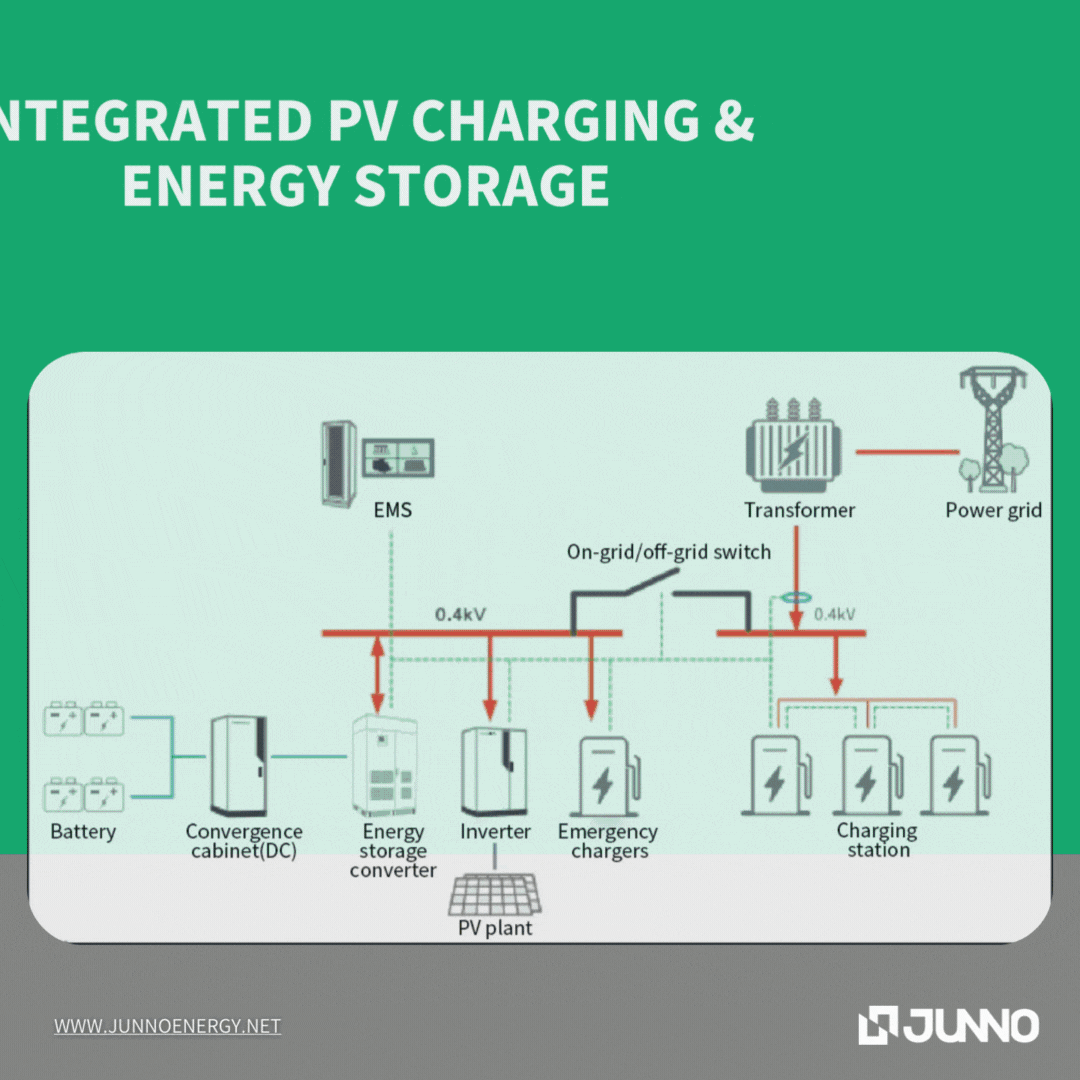How to Efficiently Operate an Integrated Photovoltaic Energy Storage and Charging Station?
What is the Integrated PV Charging and Energy Storage? With the popularity of new energy vehicles, electric vehicle charging has brought about a surge in power demand, and the integrated photovoltaic storage and charging station has become a high-quality solution.
The so-called Integrated PV Charging and Energy Storage refers to the green charging mode which is supported by the integration of photovoltaic power generation, energy storage and charging. Specifically, it refers to a small self-powered system, which can also be called a microgrid, composed of distributed photovoltaics, electricity-using charges, distribution facilities, monitoring and protection devices. Its working principle is to use photovoltaic power generation, the surplus power stored by the energy storage equipment, jointly undertake the task of power supply and charging. In the peak of electricity consumption, photovoltaic storage and charging integrated power station can supply power to the grid. When power consumption is low, it will charge itself or electric vehicles.

Its working principle is to use photovoltaic power generation, the surplus power stored by the energy storage equipment, jointly undertake the task of power supply and charging. In the peak of electricity consumption, photovoltaic storage and charging integrated power station can supply power to the grid. When power consumption is low, it will charge itself or electric vehicles.
How to Efficiently Operate an Integrated Photovoltaic Energy Storage and Charging Station?
Multi-energy complementarity, peak shaving and valley filling
Integrated energy management charging stations for light storage and charge (change) can maximize the use of clean energy supply. Photovoltaic, energy storage, and charging (changing) facilities are electrically connected to form a microgrid, storing energy through new energy (photovoltaic, wind power) generation or nighttime valley electricity storage, and releasing green electricity for electric vehicles when charging. At the same time, according to charging demands and intelligent interaction with the public grid, two different operating modes of grid-connected and off-grid can be achieved, improving the power supply reliability of charging service centers. The application of photovoltaic + energy storage systems alleviates the impact on the grid during high-current charging of charging stations. Therefore, the multi-energy complementarity integrated energy management mode not only provides clean electricity for electric vehicles but also achieves auxiliary services such as peak shaving and valley filling for power supply, effectively improving the operational efficiency of the grid.
Efficient Operations and Enhanced User Experience
Facilitating Operational Management
Charging piles are part of electrical equipment and require regular maintenance by operational personnel. Managing multiple charging stations with small installed capacities and inefficient layouts poses challenges in maintenance. Online maintenance service orders often have time constraints, leading to operational personnel frequently rushing and sometimes arriving late, which increases economic costs and road traffic safety risks. Integrated energy management stations with multi-energy complementarity, like light storage and charge (change) facilities, are centralized sites. They can implement measures such as manned operational shifts or installing remote monitoring equipment for remote control, significantly reducing the workload on operational personnel and effectively improving operational efficiency.
Enhanced Customer Charging Service Experience
Firstly, integrated light storage and charge (change) stations adhere to unified construction standards, featuring service centers within the site offering self-service light refreshments, rest and viewing areas, hot water facilities, and restrooms. Secondly, these stations have greater capacity to accommodate charging services compared to typical sites, eliminating the need for customers to wait in long queues, thereby further enhancing the customer charging service experience.
Unified Construction and Operation, Diversified Services
Integrated light storage and charge (change) stations represent a new model for urban charging services, capable of integrating resources and utilizing existing site resources to explore profit opportunities through multiple channels, significantly reducing investment costs and shortening the payback period.
Resource Integration, Unified Construction, Cost Savings: Integrated light storage and charge (change) stations leverage the large land area, strong capacity for accommodation, and high power utilization rate of centralized charging stations. They combine these characteristics with existing technologies to achieve multiple energy complementarity, maximizing economic benefits. For example, installing photovoltaic systems on existing carport roofs not only fulfills the traditional function of rain shelters but also generates economic value through electricity generation, reducing land use and saving land resource costs. Moreover, the lifespan of photovoltaic components far exceeds that of stretched membrane materials used in canopy roofs, thereby increasing the longevity of rain shelters. Additionally, these stations create scenarios for recycling and utilizing secondary electric vehicle batteries, significantly reducing the cost of energy storage systems and addressing issues related to battery recycling, preventing battery pollution and resource wastage.
Diversified services to enhance operational efficiency. By leveraging technology to increase the self-consumption rate of photovoltaic power generation and scientifically setting strategies for energy storage device charging and discharging, it maximizes the economic value of photovoltaic energy storage and enhances profitability. Stations should install car wash machines to provide value-added services such as scan-code car washing or free car wash with charging coupons, thereby maximizing the shortening of the payback period, setting an example, and promoting sustainable development.